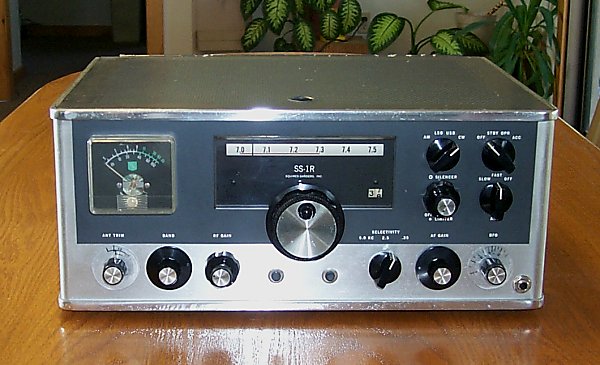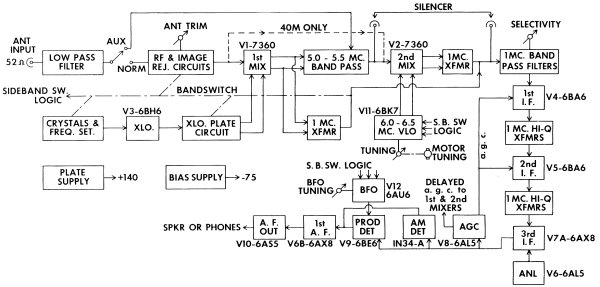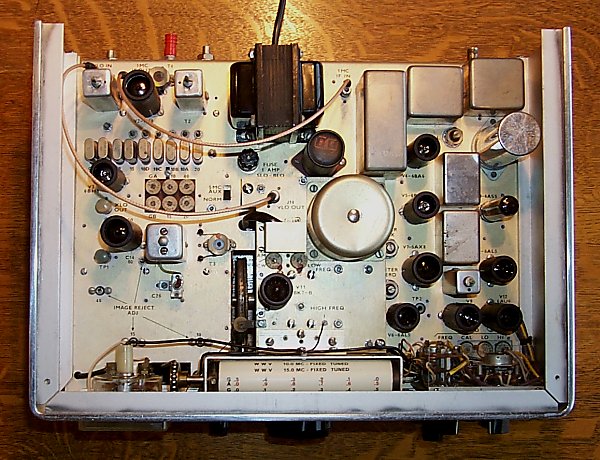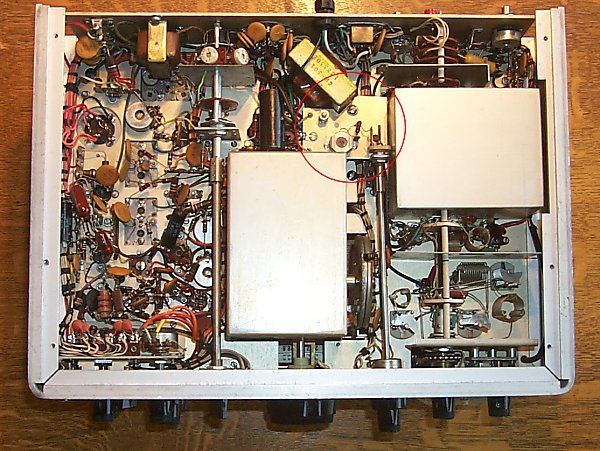|
Squires Sanders SS-1R Amateur Band Receiver Performance Test |

|
|
"The Squires-Sanders, Inc. SS-1R is a high performance communications receiver explicitly designed for amateur band operation on 80 through 10 meters. A completely new approach to front-end design produces superb freedom from cross-modulation and overload, while the frequency precision and stability sets new standards for amateur equipment." That's how the Squires-Sanders advertising read on the SS-1R - a receiver produced in relatively low numbers. Most receiver enthusiasts I've talked to have never had the opportunity to use one and express great interest in its performance and the capabilities of the 7360 beam deflection tubes used as the heart of the receiver front end. A search of the literature and the internet turns up little detailed information on the receiver other than an article by William Squires in September 1963 QST and the Recent Equipment review in May 1964 QST. While Squires presented measurements for cross modulation, blocking and noise figure, his measurements predate the standardized receiver test procedures that began in the mid 70s. The goal of this project was to test a properly functioning receiver, using current measurement techniques, and compare its performance to other popular receivers.
|

|
|
Receiver Particulars
|
| Band | MDS | Blocking | Two-tone D.R. | |
| (20 kHz) | (20 kHz) | |||
| 80 meters | -134 dBm | 108 dB | 89 dB | |
| 40 meters | -136 dBm | 120 dB | 89 dB | |
| 20 meters | -136 dBm | 110 dB | 90 dB |
|
How does the SS-1R stack up? Comparing the SS-1R to its predecessors on a list of Boat Anchor Receiver Tests it does quite well. MDS is not as good as the BA receivers tested but quite acceptable for HF use. The SS-1R dynamic range numbers beat all those on the list, however the R-390A wins the blocking dynamic range competition.
|
|
LO level | MDS | Blocking | Two-tone D.R. | |
| (20 kHz) | (20 kHz) | |||
| 6V p-p | -136 dBm | 120 dB | 89 dB | |
| 10V p-p | -138 dBm | 129 dB | 94 dB | |
| 14V p-p | -138 dBm | 132 dB | 94 dB |
|
Blocking dynamic range was the biggest beneficiary of increased LO, however all three measurements showed improvement. Even higher LO levels (above 14V p-p) were tried and further improvement in blocking dynamic range was noted but at a diminished rate of improvement. Somewhat surprising was the 2-dB improvement in noise floor. Noise levels increased for LO levels below 8V p-p and got significantly worse for LO levels below 4V p-p.
A curious addition to this receiver is the i-f notch filter shown in the red circle. Adjustment of the notch is via a knob that is concentric with the rf gain control. This circuit does not appear on the two schematic diagrams that are available. Initially it was thought that this was a user added feature but on closer inspection it looks to be a factory job. The components used including the fixed value capacitors, pot core, resistors, teflon tie points and concentric knobs are all factory parts. Perhaps this was a custom factory addition.
Squires also manufactured innovative accessories for the SS-1R. The SS-1S 'Noise Silencer', detected impulse noise in the wide (500 kHz) first i-f, amplified and shaped these impulses and used them to provide blanking action in the narrow second i-f. It was sold as a separate unit and was conveniently housed in an SS-1RS matching speaker. The SS-1V Video Bandscanner is a band scope that allows monitoring of the entire band in use. The displayed signals don't move as the receiver is tuned, but instead a marker 'pip' indicates the receive frequency. Squires also manufactured a shortwave broadcast version of the receiver identified as the SS-IBS.
|

